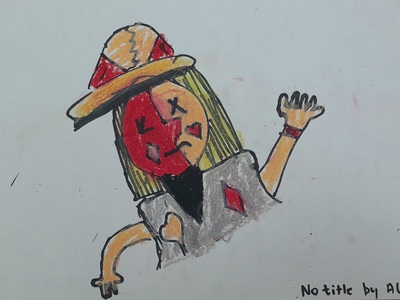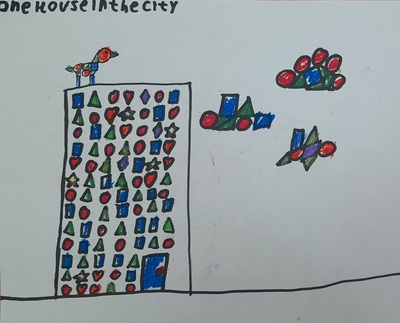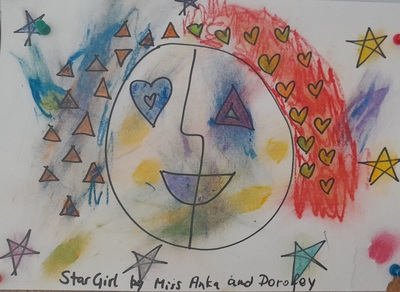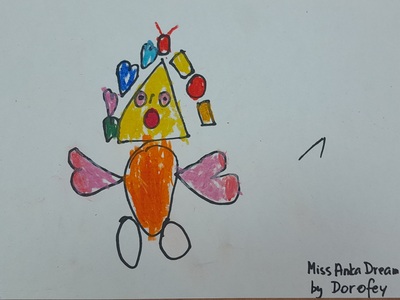
The language
This was to be our final lesson in the topic of body parts and, once more, after singing the hello and going over ‘How do you feel today?’, we went for our spinner game. I was really worried that we would not have enough time for anything else as I wanted not only introduce a new artist but also a new tool.

The artist
This was the second time we invited Pablo Picasso to our lesson. And the kids remembered! They were a little bit surprised because they met him as a one-line artist with the amazing animals (post here) and, at least some of them, a little bit taken aback by the sheer contrast between the two. I showed them a few portraits and we highlighted the main pointers of cubism (which we also talked about before). We also tried to find all the figures (shapes) in the portraits.

The art
This was a day when we would be experimenting with a new took – oil pastels and that is why I decided to demonstrated some of the basic blending techniques. You can find the ideas in the videos here and here.
Afterwards I demonstrated the double portrait that I made while getting ready for the lesson and we talked about its main features (shapes and colours). I also showed them the simplest way for achieving the Picasso effect by drawing one more face: a shape for the face, divided into halves, smile (ideally misshapen, mismatching halves) and shapes for eyes, nose and hair.The next step went according to the plan one of my students wrote on the board once: ‘3. Miss Anka Paint, 4. We paint’. We started to work.

- The kids chose different ways of working with the oil pastels. Some combined them with pencil, some with markers and for some they were just a crayons replacement. But we also had a few properly experimenting with the new tool.
- Some of my students refused to see the world through Picasso’s eyes. They really didn’t like his approach and asked if it is possible to draw their friends the way they want. It was more common in the older group, the younger kids just went for it.
- Some of the students also asked if they can draw ‘something they choose’, not faces and I also said yes. Obviously, Kolya had his own idea for the interpretation of the topic and for cubism and I am happy I did not object. The house of spades, hearts, dimonds and cards is just beautiful. ‘One house in the city’, as he called it.
- Some of them loved it, though, and the best piece of evidence is that they snatched the paintings as soon as possible, to take them home. I barely managed to take my photographs.
- We also had one character sitting for a portrait, my new portrait and a few other precious creations.
- The Star Girl that you can see below is a joint effort between me and one of my youngest student who decided to help me with the colour. I decided to save it here not only because I am happy with my design but mostly because it shows how the kid’s creativity develops as they go through the task. I drew the face and started to colour it, in the most boring of ways but soon I was joined by my student who took over and decisively so. It was fascinating to see how many different ways of colouring, blending, shading and working with oil pastels he came up with during that task. The final product – below.
- Watching the kids work was a real pleasure. One of my students was working on something hard that, from afar, looked like her trying to create one big, colourful, many-layered blob of pastel that some, less patient, might label as ‘trying to destroy all my pastels in five minutes’ but the final product, the girl with a horse, proved me wrong. Experimentation was just experimentation, and one of the many steps towards beauty.




Happy teaching!
P.S. A request!
It is very simple.
I would like to know a tiny little bit more about my readers. There are so many of you, popping in here, again and again, and the numbers of visitors and visits are going up and make my heart sweel with joy. But I realised I don’t know anything about my readers and I would love to know, a tiny little bit more.
Hence the survey.